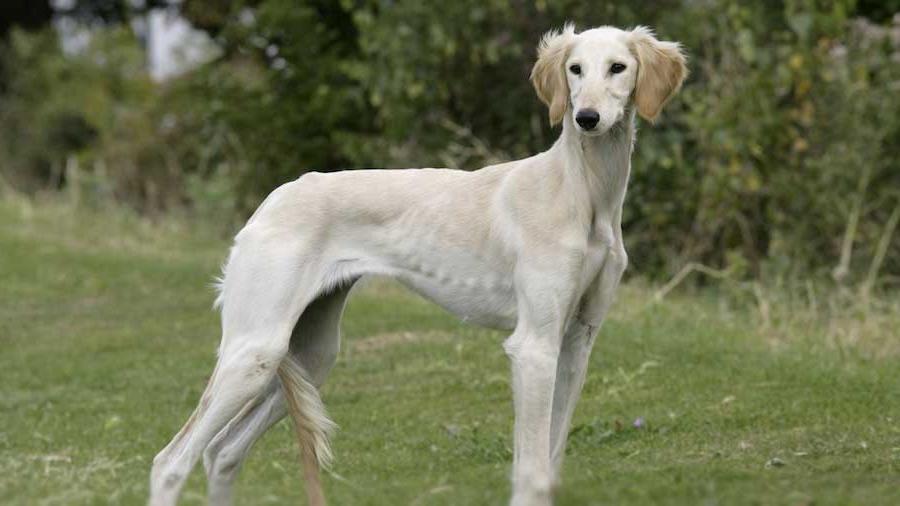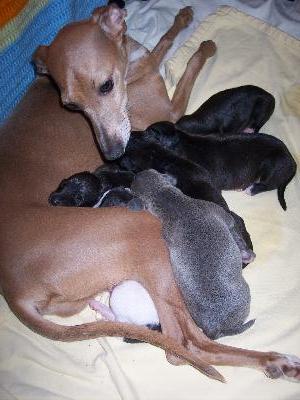- Breed Category: Sighthound
- Country of Origin: India
- Average Height: 64-74 cm (25-29 in)
- Average Weight: 20-30 kg (44-66 lbs)
- Average Life Span: 10-14 years
- Grooming Requirements: Low, occasional brushing
- Exercise Requirements: High, needs daily exercise
- Coat Type: Short and smooth
- Coat Color Variations: Various, often fawn or brindle
- Shedding Level: Low
- Ear Type: Folded
- Tail Type: Long and tapered
- Temperament: Loyal, alert, and independent
- Intelligence Level: High
- Barking Tendency: Low
- Compatibility with Children: Good with proper socialisation
- Compatibility with Other Pets: Varies, needs socialisation
- Training Ease: Moderate, requires patience
- Common Health Issues: Hip dysplasia, eye problems
- Dietary Needs: High-quality, balanced diet
- Energy Level: High
- Drooling Tendency: Low
- Sensitivity to Weather: Sensitive to cold
- Overall Maintenance Level: Moderate
- Original Purpose: Hunting and coursing
- Apartment Friendly: Not ideal, needs space
- Best Suited For: Active families, rural settings
- Cost of Ownership: Moderate
- Unique Traits: Agile, excellent sight
Imagine a sleek, agile dog with a coat as smooth as silk, darting across the open fields with grace and speed. This is the Mahratta Greyhound, a breed that captures the essence of elegance and athleticism. Known for their keen sight and swift pace, these dogs have a rich history that dates back to the Indian subcontinent. Originally bred by the Maratha people, they were prized for their hunting prowess and loyalty. This article aims to delve into the unique characteristics, fascinating history, and essential care tips for the Mahratta Greyhound. Whether you’re a seasoned dog owner or just curious, understanding this breed’s background and needs can enrich your appreciation for these remarkable canines.
The Mahratta Greyhound: A Glimpse into Its Origins and Characteristics

Early Development of the Breed
The Mahratta Greyhound traces its roots back to the Indian subcontinent, where it was meticulously developed by the Maratha people. These dogs were crafted for their speed and agility, essential traits for hunting in the vast, open landscapes of India. The breed’s development was a careful process, focusing on enhancing their natural abilities to track and chase game.
Role in Hunting and Companionship
Primarily, the Mahratta Greyhound was a hunter’s companion, excelling in tracking and capturing prey with remarkable efficiency. Their keen eyesight and swift movements made them invaluable in the field. Beyond hunting, they also served as loyal companions, forming strong bonds with their human counterparts.
Key Historical Figures and Regions
The Maratha Empire, known for its strategic prowess and cultural richness, played a significant role in the breed’s creation. The regions of Maharashtra and surrounding areas were pivotal in shaping the Mahratta Greyhound, with local rulers and nobility often involved in their breeding and training.
Physical Characteristics
With a sleek, muscular build, the Mahratta Greyhound is a picture of elegance and power. Their coat is short and smooth, often in shades that blend seamlessly with their environment. These dogs are not just about looks; their physical attributes are perfectly aligned with their functional roles, making them both beautiful and efficient.
Appearance and Unique Physical Traits
The Mahratta Greyhound stands out with its sleek, athletic build, embodying both grace and power. These dogs are medium-sized, with a streamlined body that hints at their speed and agility. Their coat is short and smooth, often found in earthy tones like fawn, brindle, or black, which help them blend into their natural surroundings. Distinctive markings, such as a white chest or paws, can add to their striking appearance.
One of their most unique physical traits is their long, slender legs, which contribute to their impressive speed. Their deep chest allows for excellent lung capacity, essential for endurance during hunts. The Mahratta Greyhound’s overall physique is a testament to their purpose as swift hunters.
Temperament and Behaviour
These dogs are known for their calm and composed temperament. While they are energetic and love a good run, they are equally content to relax at home. Mahratta Greyhounds are intelligent and can be quite independent, yet they form strong bonds with their families. They are generally good-natured and get along well with children and other pets, making them excellent companions.
Personality Traits and Suitability as a Family Pet

Typical Personality Traits
The Mahratta Greyhound is a loyal and agile breed, known for its high energy levels. These dogs are not just fast runners; they are also quick thinkers, making them both intelligent and adaptable. Their loyalty is unmatched, often forming deep connections with their human families.
Suitability as a Family Pet and Hunting Companion
As a family pet, the Mahratta Greyhound is a fantastic choice. Their gentle nature and loyalty make them great companions for families. They are equally at home in the field, where their hunting instincts shine. Their agility and speed make them excellent hunting partners, capable of tracking and capturing prey with ease.
Interaction with Children and Other Animals
Mahratta Greyhounds are generally good with children, displaying patience and gentleness. They can coexist peacefully with other animals, especially if socialised from a young age. Their calm demeanour makes them a harmonious addition to any household.
Training and Exercise Needs
These dogs thrive on regular exercise and mental stimulation. Daily runs or long walks are essential to keep them happy and healthy. Training should be consistent and positive, as they respond well to encouragement and rewards. Their intelligence means they pick up commands quickly, making training a rewarding experience for both dog and owner.
Training, Exercise, and Health of the Mahratta Greyhound
Importance of Early Training and Socialisation
Getting a Mahratta Greyhound off to a good start with early training and socialisation is crucial. These dogs are naturally intelligent and independent, so introducing them to various environments, people, and other animals early on helps them grow into well-rounded adults. This early exposure can prevent behavioural issues and ensure they are comfortable in different settings.
Recommended Training Techniques
When it comes to training, positive reinforcement is key. These dogs respond well to encouragement and rewards, making training sessions enjoyable for both you and your dog. Consistency is important, so regular, short training sessions work best. Avoid harsh methods, as they can be counterproductive with this sensitive breed.
Daily Exercise Requirements and Activities They Enjoy
Mahratta Greyhounds are active dogs that need daily exercise to stay healthy and happy. A good run or a long walk each day is essential. They love activities that challenge their speed and agility, like fetch or agility courses. Keeping them physically and mentally stimulated is important to prevent boredom.
Health and Lifespan
Generally, Mahratta Greyhounds are healthy dogs with a lifespan of around 12 to 15 years. Regular vet check-ups, a balanced diet, and proper exercise contribute to their longevity. Like all breeds, they can be prone to certain health issues, so staying informed and proactive about their health is beneficial.
Health and Care for the Mahratta Greyhound

Common Health Issues
Mahratta Greyhounds are generally robust, but like any breed, they can face specific health challenges. Some may experience joint issues or hip dysplasia, common in active breeds. Regular vet visits can help catch these early. Heart conditions and eye problems are also worth monitoring.
Average Lifespan and Health Tips
With proper care, these dogs can live between 12 to 15 years. To keep them healthy, ensure they have a balanced diet rich in nutrients. Regular exercise is crucial, not just for their physical health but also for mental stimulation. A happy Mahratta Greyhound is one that gets to stretch its legs daily.
Preventative Care Recommendations
Preventative care is key. Regular vaccinations, flea and tick prevention, and dental care should be part of their routine. Annual vet check-ups can help catch any potential issues early, ensuring your dog stays in top shape.
Grooming and Maintenance
Grooming a Mahratta Greyhound is relatively straightforward. Their short coat requires minimal maintenance, just a weekly brush to remove loose hair. Regular nail trimming and ear cleaning are also important to prevent infections. Keeping their coat clean and their nails trimmed will ensure they look and feel their best.
Coat Care and Grooming for the Mahratta Greyhound
Coat Care and Grooming Routines
The Mahratta Greyhound’s sleek, short coat is a breeze to maintain. A weekly brush is usually enough to keep it looking its best. This not only removes loose hair but also helps distribute natural oils, keeping the coat shiny and healthy. Regular grooming sessions are a great opportunity to check for any skin issues or parasites.
Shedding and Seasonal Grooming Tips
While these dogs don’t shed excessively, you might notice a bit more hair during seasonal changes. During these times, brushing a couple of times a week can help manage shedding. A gentle bath every few months or when they get particularly dirty will keep them fresh without stripping their coat of essential oils.
Diet and Nutrition
A balanced diet is crucial for the Mahratta Greyhound’s health and vitality. High-quality dog food, rich in protein and essential nutrients, supports their active lifestyle. It’s important to monitor their weight, as these dogs can be prone to obesity if overfed. Fresh water should always be available, and treats should be given in moderation to maintain their sleek physique.
Nutritional Needs and Feeding for the Mahratta Greyhound

Nutritional Needs for Optimal Health
Feeding your Mahratta Greyhound a balanced diet is key to maintaining their health and energy. High-quality dog food with a good mix of protein, fats, and carbohydrates is essential. Look for foods rich in omega-3 fatty acids to support their coat and joint health.
Foods to Include and Avoid
Include lean meats, fish, and vegetables in their diet. Avoid foods high in fillers, artificial additives, and excessive grains, as these can lead to digestive issues. Fresh fruits like apples and blueberries can be a healthy treat option.
Feeding Schedules and Portion Recommendations
Feed your Mahratta Greyhound twice a day to maintain their energy levels. Portion sizes depend on their age, weight, and activity level, but generally, 1.5 to 2.5 cups of dry food per meal is a good starting point. Adjust as needed to keep them at a healthy weight.
Fun Facts and Trivia
Did you know the Mahratta Greyhound is one of the few breeds that can reach speeds up to 60 km/h? Their unique build and history make them fascinating companions, both in the field and at home.
Interesting Tidbits and Famous Mahratta Greyhounds

Interesting Tidbits about the Breed
The Mahratta Greyhound is not just a pretty face; it’s a breed with a fascinating history. Known for their incredible speed, these dogs can reach up to 60 km/h, making them one of the fastest breeds in the world. Their agility and keen eyesight were highly valued by the Maratha warriors, who relied on them for hunting and as loyal companions.
Another interesting fact is their unique ability to adapt to various climates. Despite their origins in the warm regions of India, Mahratta Greyhounds have shown remarkable resilience in different environments, making them versatile pets.
Famous Mahratta Greyhounds in Media or History
While not as widely recognised as some other breeds, the Mahratta Greyhound has had its moments in the spotlight. Historically, they were favoured by Indian nobility, often depicted in paintings and literature as symbols of speed and grace. In recent years, their unique characteristics have caught the attention of dog enthusiasts worldwide, leading to features in documentaries exploring rare and exotic breeds.
Final Thoughts

The Mahratta Greyhound embodies elegance and athleticism. This breed’s rich history and unique traits make it a fascinating companion. Balancing high energy with loyalty, they thrive in active environments and form deep bonds with families. Understanding their needs and characteristics enhances the joy of owning such a remarkable dog. Embrace the journey of caring for a Mahratta Greyhound and experience the rewards of their companionship.
